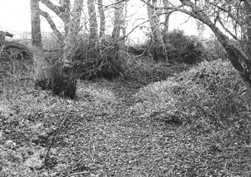
Set in stone
The current situation was set in stone by the 1963 Water Resources Act, which required the licensing of most abstractions greater than 10m3/d. However, ‘Licences of Right’ were granted, with no environmental assessment, at rates that were often well in excess of what could actually be pumped from the boreholes.
Did the impacts all go unnoticed before 1970? Well yes, apparently they did - which highlights the key point I wish to make. The PTS is simply a fantastic aquifer, albeit a bit misunderstood in the past. It has withstood the burden of this abstraction, and shown little visible impact. This is the hallmark of an aquifer with a large amount of storage, where the hydraulic signal moves very slowly. The impacts have occurred, but imperceptibly over decades - something you can only really pick up with systematic hydrometric monitoring and sophisticated analysis (particularly using numerical groundwater models).
Of course, some people suspected something was amiss and complained to the authorities; but alas they could be easily fobbed off with bogus explanations involving unusual weather conditions. At the time, the water authorities, in their role as both regulator and water supplier, had little incentive to reverse the situation. Groundwater supply was cheap as it then required little treatment and was close to the demand that was ever increasing. As most monitoring only began after about 1970, for many watercourses it was too late and they, together with their dependent habitats, quietly disappeared - possibly for ever.
By the early 1970s, as water demand was predicted to increase, there was a lot of pressure to increase groundwater abstraction even further. Professional hydrogeologists had begun to appreciate the impacts of constant-rate abstraction, and began to consider different ways of using the aquifers - leading to the development of ‘conjunctive use’ schemes. These combine surface water and groundwater use: the former used during wet periods, and the latter during dry ones when surface water flows are low. Long-term impacts on surface water from groundwater abstraction are thereby much reduced, as groundwater is only used when surface water sources cannot supply during dry periods. The Shropshire Groundwater Scheme (SGS), the largest and one of the best conjunctive use schemes in the UK, takes water from the PTS and is currently operated by the Environment Agency. The reason it works so well is because of the storage capacity of the PTS.